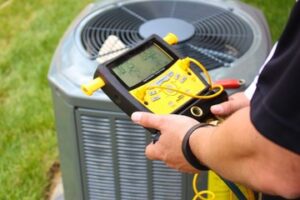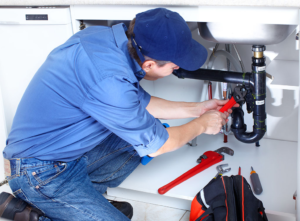Just like a car, an HVAC system needs routine maintenance. This can help prevent problems before they happen, such as an inefficient airflow or a compressor leaking refrigerant.

During a maintenance call, a qualified technician will check several components and test thermostat settings and operations. A reliable HVAC company will also discuss energy-saving services that optimize home comfort all year round.
An air filter may seem like an insignificant component of your HVAC system, but it is very important for the performance and longevity of your equipment and for maintaining good indoor air quality. Replacing filters monthly or as recommended prevents dust, dirt and other contaminants from damaging internal components and circulating them through your home. It also helps reduce the symptoms of respiratory problems and improves comfort and overall health.
An HVAC air filter is essentially a screen that fits into an HVAC compartment to trap and block airborne particulates from entering the blower and circulating throughout your home. The filtered air then passes through the heat pump or air conditioner, where the particles are removed and dispersed. A dirty air filter puts extra strain on the system, which can result in lower energy efficiency and higher utility bills. It can also damage internal components or cause them to become clogged, which will require repair and replacement sooner than normal.
There are many different types of HVAC filters to choose from. Each has its own filtration capabilities, lifespan and price range. Some are disposable, while others can be washed and reused. When choosing a filter, make sure to consider the type of heating and cooling system you have and follow its manufacturer’s guidelines for size, rated MERV value, and proper installation.
Some people prefer a fiberglass air filter, which is typically the least expensive and does a great job of keeping large contaminant particles out of the system. However, it does not do as well a job of filtering small airborne irritants. If you have allergies or asthma, it is best to use a higher-rated filter with a MERV rating of 14 or above, and to change them often to prevent clogs.
If there is construction in or near your house, it is especially important to frequently check and replace your filter as necessary. Dust and other debris from worksites can suck into the ventilation system, increasing the stress on your HVAC system. Moreover, a damp filter can quickly become moldy and spread airborne mold spores throughout your home.
Condensate Drains
When your HVAC system heats or cools your home’s air, it produces humidity in the form of condensation. This moisture has to go somewhere, and that’s where your condensate drain line comes in. This line runs directly from your indoor unit to a pan, then to a drain pipe outside. It’s the system’s way of funneling the condensation away from your indoor air conditioning cabinet, so it doesn’t damage the unit or your home.
During your home’s HVAC service, the technician will check to make sure this drainage system is working properly. A clogged drain line can lead to mold, mildew, and other problems with your indoor air quality. You can help prevent clogs by regularly changing your filter and by avoiding debris buildup in the drain line.
The technician will also inspect the condensate pan and drain line for signs of a clog. They’ll also check the temperature settings on your thermostat, which can be affected by dirty filters or uncalibrated sensors.
If the technician discovers that your air conditioning drain line is clogged, they’ll probably recommend a professional cleaning or repair. This may include removing any debris or blockages, flushing out the drain line, and sealing the drain line to the condensate pan. Alternatively, they’ll likely install a “ceiling saver” kit that will disable your air conditioner when it detects water in the secondary drain pan. These kits can save you from costly water damage, and they’re usually less expensive than a full replacement of the primary or secondary drain line.
Thermostats
The thermostat is the brains behind your heater and air conditioner, allowing you to choose when these systems should turn on and what temperature they should be set at various times of day. We’ve seen many homeowners call our pros for HVAC service when the real issue isn’t a broken system, but a malfunctioning thermostat that isn’t properly managing these systems.
Thermostats that are programmed to run on a schedule need to be equipped with a battery to preserve their settings in the event of a power outage. It’s important to replace these batteries once per year as part of your annual HVAC maintenance service to ensure your thermostat can work as designed.
A faulty thermostat can cause your heater or AC to work overtime in the summer and winter, which can increase your energy bill significantly. It can also shorten the lifespan of your HVAC equipment by forcing it to operate under stress. Thermostats with adaptive learning technology learn your family’s heating and cooling habits over time, so the system doesn’t have to work as hard to maintain optimal comfort levels in your home.
When a thermostat can’t display the correct temperature or doesn’t stay at its desired setting, it’s likely due to dirty or damaged components. Dirt and debris from dust, pet and human dander, cooking grease, humidity, oils transferred from the skin, and other common contaminants can accumulate on the surface of your thermostat or underneath buttons and switches. It’s a good idea to wipe down your thermostat with a damp cloth at least once every two weeks.
In addition, a faulty thermostat can be caused by the heat anticipator (the part that tells the unit to switch to heating mode) being stuck. A technician can usually fix this by removing the cover and gently tapping on it with a screwdriver to loosen it. In this case, the unit will then need to be calibrated for a more accurate reading.
Electrical Connections
The electrical system provides the power for all of your HVAC equipment, and it is an essential part of keeping you cool in summer. It can also play a role in heating your home in the winter. However, the electrical components in your HVAC system can develop problems that require professional evaluation and repair from an experienced technician.
One of the most common HVAC electrical issues involves faulty wiring. Electric wires connect all of the components in your HVAC system, and they can become damaged or worn over time. Loose connections can cause overheating and may create fire hazards. Electrical wires can also become corroded or frayed, and these problems can cause your system to malfunction.
Another common electrical problem is an overloaded circuit. When the voltage in an HVAC system exceeds a safe level, the circuit breaker or fuse will trip. This is a safety mechanism that prevents the excess current from creating more damage and causing more costly repairs.
Overloaded circuits can also lead to a decrease in overall HVAC system efficiency. The extra strain causes the system to work harder to maintain your desired temperature, which can result in higher energy consumption and expensive utility bills.
An overloaded circuit can also cause the compressor, blower motor, and transformer to become faulty. These electrical components are expensive to repair, and they can reduce the lifespan of your system.
Licensed HVAC technicians are trained to work with electricity, so they know how to safely and properly handle these complex electrical components. They can also recognize other signs of an electrical problem, like tripped circuit breakers or blown fuses.
Electrical codes say that any equipment requiring more than 50 volts must have a positive means of disconnect adjacent to and in sight of the appliance. This typically means a 240-volt pigtail. A faulty or improperly installed disconnect can be a fire hazard and should be replaced as soon as possible.
